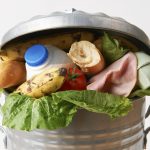 The United States produces more food waste than almost any other country, ranking third globally. In response, the federal government set a bold target: halve food waste by 2030, cutting it to about 164 pounds per person annually from 2016 levels. Yet, a study from the University of California, Davis, reveals a sobering reality—per capita food waste has risen, not fallen, since 2016.
The United States produces more food waste than almost any other country, ranking third globally. In response, the federal government set a bold target: halve food waste by 2030, cutting it to about 164 pounds per person annually from 2016 levels. Yet, a study from the University of California, Davis, reveals a sobering reality—per capita food waste has risen, not fallen, since 2016.
“With just five years left until 2030, it’s alarming how little progress we’ve made,” the researchers warn. “Comprehensive policies need to be enacted immediately.”
Recycling Dominates Policies, but Prevention Falls Short
The study assessed state-level policies against federal goals, finding an overemphasis on food waste recycling—through composting and anaerobic digestion—at the expense of prevention and rescue strategies, such as donating excess food to food banks or converting it to animal feed. This approach diverges from a 2021 update by the U.S. Environmental Protection Agency, which excluded recycling from its definition of food waste to emphasize environmental and ethical considerations.
“More than a third of the food we produce is wasted, even as millions of Americans face food insecurity,” the researchers explain. “Instead of focusing on recycling food waste, we should prioritize redirecting it to those in need.”
While recycling keeps food out of landfills, it does little to address the resources wasted in food production—energy, water, and fertilizer—or the broader environmental cost. Globally, food waste accounts for 8–10% of greenhouse gas emissions.
Examining State Policy Effectiveness
The researchers evaluated states’ food waste reduction potential across four key policy areas:
- Prevention (e.g., clear date labeling).
- Rescue (e.g., liability protection and tax incentives for food donations).
- Repurposing (e.g., using excess food for animal feed).
- Recycling (e.g., organic waste bans and waste recycling laws).
Although recycling policies showed the largest potential for diverting waste, even states with robust recycling programs struggled to meet federal targets. Only California, Vermont, and Arizona are on track to achieve the 2030 goal of reducing food waste to 164 pounds per person.
Under the EPA’s updated definition of food waste, which excludes recycling, diversion efforts would shrink significantly. Most states would only reduce waste by 11–30 pounds per person annually, far below the target.
Why Progress Varies Across States
Arkansas, which produces significantly less food waste than most states, is closest to the federal goal despite ranking last in diversion potential. Arizona, by contrast, generates far more waste but has one of the highest potentials for diversion under existing policies. These disparities underscore the challenge of tailoring solutions to states with vastly different starting points.
The pandemic also influenced food waste trends. Early in the pandemic, food waste declined as more people cooked at home and fewer catered events took place. However, researchers suggest that many Americans have since returned to pre-pandemic habits, exacerbating the problem.
Rethinking the Approach
“When state policies focus on recycling, it’s easy to think we’re solving the food waste problem,” the researchers note. “But recycling alone is not enough—and it shouldn’t be the first step.”
Instead, the study advocates for policies that emphasize prevention and rescue. Preventing waste at its source and redirecting surplus food to those in need can yield greater environmental and social benefits than recycling ever could.
As the 2030 deadline looms, states must rethink their strategies. Achieving meaningful progress will require a shift in focus, prioritizing not just where food waste ends up but how to prevent it from occurring in the first place.